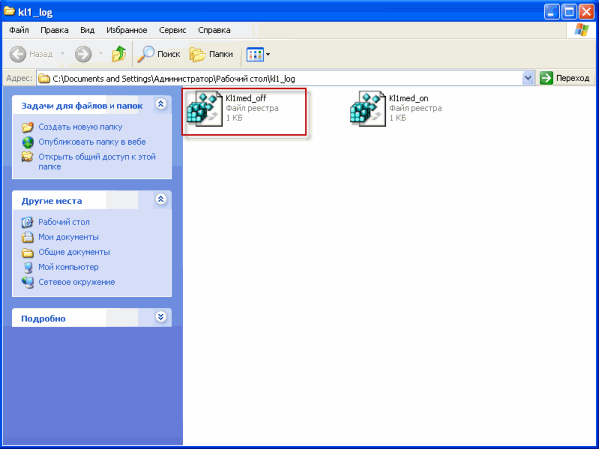Service articles: Scanning a computer, saving a log and launching a script using the AVZ utility
When uninstalling Kaspersky Lab products using standard Windows tools (Control Panel → Add / Remove Programs) errors may occur, as a result of which the application will not be removed or will be partially removed. To completely remove a Kaspersky Lab product, use the kavremover utility.
The uninstall utility completely removes the following Kaspersky Lab products:
- Kaspersky Safe Kids (all versions)
- Kaspersky Secure Connection
- Kaspersky Small Office Security for Personal Computer / File Server (all versions)
- Kaspersky Total Security (all versions)
- Kaspersky PURE / CRYSTAL (all versions)
- Kaspersky Anti-Virus (from version 2009 and above)
- Kaspersky Internet Security (from version 2009 and later)
- Kaspersky Free
- Kaspersky Password Manager (all versions)
- Kaspersky Fraud Prevention for Endpoint (all versions)
- AVP Tool driver
- Endpoint Sensor
- Kaspersky Security Scan (all versions)
- Kaspersky Endpoint Security for File Servers and Workstations for Windows (starting from version 8 and higher)
- Kaspersky Anti-Virus 6.0 / 6.0 R2 for Windows Workstations
- Kaspersky Anti-Virus 6.0 / 6.0 R2 for Windows Servers
- Kaspersky Anti-Virus 6.0 FS MP4
- Kaspersky Anti-Virus 6.0 SOS MP4
- Kaspersky Anti-Virus 6.0 WKS MP4
- Kaspersky Anti-Virus 8.0 for Windows Servers Enterprise Edition / MR1 / SP2
- Kaspersky Security 10 for Windows Server
- Nifty Security 24 Internet Security / Nifty Security 24 Internet Security 2013
- KTFS for Windows 3.0
- Kaspersky Anti-Ransomware Tool (KART) for Business (all versions)
- Kaspersky Anti Targeted Attack (KATA) Platform 2.0
- Kaspersky Embedded Systems Security 2.0
If you uninstall a product using the kavremover utility, the license information is deleted along with it. Make sure you save your product key or activation code so you can reuse it.
Working with the utility
To completely remove the program, follow these steps:
- Download the kavremvr.zip archive and then unpack it (for example, using the WinZip archiver program). Or download the executable file kavremvr.exe.
- Run the kavremvr.exe file by double clicking on it with the left mouse button.
- Read the License Agreement of Kaspersky Lab. Read the agreement carefully and, if you agree with all of its clauses, click I agree.
- In the window Kaspersky Lab Products Remover enter the security code in the empty field, which is shown in the picture. If the code is not clearly visible, to re-generate the code, click on the refresh button to the right of the picture.
- Select from the menu Found the following products a Kaspersky Lab application that was installed on your computer. Click on Delete... If several Kaspersky Lab products are installed on the computer, select and uninstall them one by one. You can select the program to uninstall from the list of all products supported by the uninstall utility, for this:
- Run the kavremvr utility via the command line in manual selection mode, with the nodetect parameter:
- kavremvr.exe --nodetect.
- Select the required program from the list and uninstall it. If there are several such programs, uninstall them one by one.

- Yes in the window Registry editor.
- In case of successful completion of data entry into the register, in the window Registry editor a message will appear: " Data from "<путь к файлу>\ Kl1med_on.reg "have been successfully entered into the registry". Click OK.

- Reboot your computer.
- Reproduce the problem situation.
- Run the file kl1med_off.reg.

- Confirm that you really want to add information to the registry by clicking Yes in the window Registry editor.
- In case of successful completion of the process of entering data into the register, in the window Registry editor a message will appear: "Data from"<путь к файлу>\ Kl1med_off.reg "have been successfully entered into the registry"... Click on OK.

The log file will be saved to the root of the disk C: with a unique name _ids.

Example section
SSLEngine on
SSLSessionCacheTimeout 300
SSLCipherSuite ALL:! ADH:! EXPORT56: RC4 + RSA: + HIGH: + MEDIUM: + LOW: + SSLv2: + EXP: + eNULL
SSLCertificateFile "conf / server.crt"
SSLCertificateKeyFile "conf / server.key"
BrowserMatch ". * MSIE. *" \
nokeepalive ssl-unclean-shutdown \
downgrade-1.0 force-response-1.0
CustomLog "logs / ssl_request.log" "% t% h% (SSL_PROTOCOL) x% (SSL_CIPHER) x \"% r \ "% b"
- Remove the programs detected by the utility. If you previously installed the 2015 version, manually select from the drop-down list Kaspersky Anti-Virus \ Internet Security \ Kaspersky Total Security 15.0.2.361(as in the picture below). In the case of other versions, the utility will automatically detect previously installed programs. Enter a randomly generated code and click Delete... Wait for the uninstallation to complete and restart your computer.
In the SSP virtual host configuration remove the “SSLOptions + StdEnvVars” directive from the section
Example section

